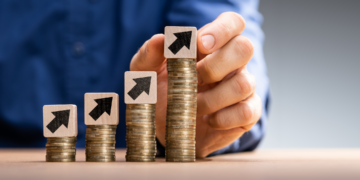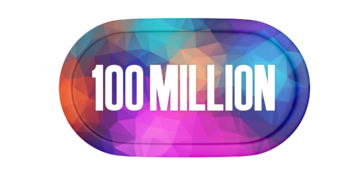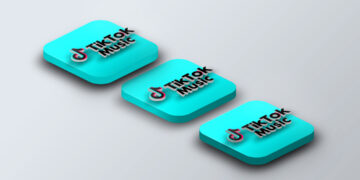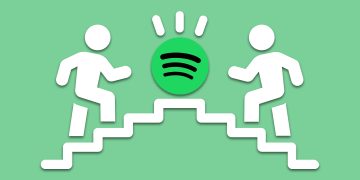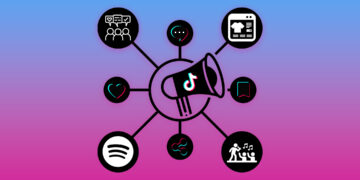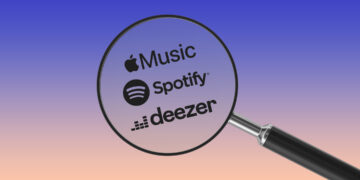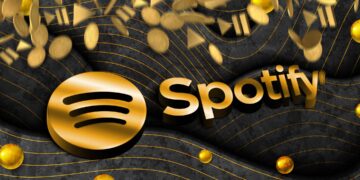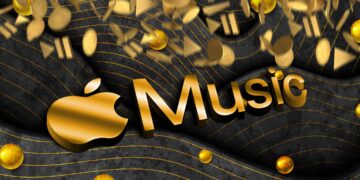How could a new streaming model look like?

- Why suddenly even the majors demand a new streaming model
- Nine possible options for such a model
- Why we shouldn't focus solely on streaming optimization
Unsatisfied musicians and smaller labels demanding a new streaming model and more fairness is nothing new. For DSPs, it has always been a bit annoying because they like to have the artists on their side. But it wasn’t much more than an annoyance that couldn’t be soothed with some nice words, glossy brochures, and pretty landing pages. Now, however, the criticism is suddenly not only coming from the artistic community, but also from the biggest and most powerful music label: Universal Music. Until now, it was actually assumed that the major labels had managed to arrange themselves quite well with the current system – after all, they either built it or at least gave their approval for it for many years, and above all, they profited from it for a long time. Now, the supposed opponents – on one side DIY artists and indie labels, on the other industry giant Universal – suddenly find themselves on the same side. At least at first glance. What is certain, however, is that since Universal CEO Sir Lucian Grainge spoke out and demanded a new streaming model, the debate has taken on an urgency never before seen.
What is Universal criticizing?
For most observers, it is obvious that the shrinking market share of the major labels is responsible for the sudden demand for a new system. Grainge sees the main reason for this as the incredible number of new songs being released. He refers to the figure of 100,000 songs being uploaded to Spotify and similar platforms every day. This number could even multiply in the foreseeable future, should DSPs be flooded with AI-generated music.
Grainge is particularly targeting so-called “fake artists” and “functional music.” The latter refers to releases for mood playlists for relaxation, workouts, or sleep, as well as releases based solely on sounds such as rain or hairdryers to calm screaming children. Grainge believes that such music cannot possibly be paid the same as releases by creative musicians (whether major or indie) who have invested a lot of time and love into their songs. However, Grainge ignores the fact that DSPs have become audio providers offering all kinds of content, and ultimately, users decide which ones they want to use. Nowadays, this includes jogging playlists, LoFi music for working, and the sound of rain for falling asleep. The streaming system has turned even passionate music fans into passive music consumers. Moreover, market shares are increasingly shifting from superstars to the middle ground, and it is in this middle ground where the most exciting and innovative sounds can be found, as well as a lot of functional music.
There is no doubt that there is a lot of fraud going on on the DSPs, and it would be important to prevent this as much as possible with a new system. However, just because functional releases have hijacked the streaming system and sometimes even taken it to the point of absurdity, does not necessarily mean that it is fraud. Rather, it clearly satisfies a need. Even Sir Grainge, probably the most powerful man in the music industry, must accept this and should not presume to decide what is good music and what is not. After all, doesn’t everything that does not cheat have its justification, even if Sir Grainge does not like that whale song is paid the same as Taylor Swift?
First tests are already underway
Universal didn’t just stop at words. They have already partnered with the DSPs TIDAL and Deezer to explore a new streaming model (or several). It is certain that it will not be the already partially explored user-centric model, as this also brings too many disadvantages for Universal. Sir Grainge and Universal have an artist-centric model in mind, but without going into detail about what that could mean. Let’s therefore search for a new model that could replace the already buried pro-rata model.
Pro-rata
To briefly summarize once again, how the pro-rata model works, which is currently used by almost all western DSPs. Often a big pot is talked about, into which all revenues flow (subscriptions and advertising, depending on the DSP) and are then distributed proportionally. If there were 1 million streams in a month and you had 100,000 of them, you would receive 10% of the generated revenue (minus the 30% the DSP keeps for itself). That’s how pro-rata works in a simplified way. In reality, it is much more complex, as many different factors determine the value of a stream, such as its origin, the type of subscription, the number of subscribers and generated streams, etc. There are therefore different pots for different countries and subscriptions. The crucial point is that everything that has been listened to for longer than 30 seconds counts as a stream, regardless of whether it was listened to for 31 seconds or 5 minutes. A user’s money does not go directly to the artists he or she has effectively listened to.
User-centric
The user-centric model is supposed to change this. The revenues generated by each user are only paid out to the artists he or she has actually listened to. Previous studies suggest that certain niche genres would benefit greatly, while hip-hop in particular would suffer significant losses. It is also unpleasant that low-listeners are rewarded. Users who listen to very few songs and artists per month distribute much more per artist than heavy users who check out a lot of music and thus distribute their subscription costs to many more artists. There have been encouraging studies so far, but also some negative points. It is difficult. In case of doubt, however, the user-centric model seems to have some advantages over the current system.
Is there a perfect and fair system for all sides? This remains to be seen, but it is highly doubtful. Let’s now look at some possible alternatives.
9 possible new streaming models
Various subscription tiers
One of the most easily implementable and understandable options is to reconsider the existing subscription systems and break away from the one-size-fits-all model. The existing system could still work for occasional listeners, but new tiers with additional features and content should be introduced for heavy users. Those users who are willing to pay more should also have the opportunity to do so. In addition, artists should finally receive the tools to monetize their super fans with exclusive content or other specials. Another option would be to offer certain fans the album earlier for an additional fee. One could learn a lot from Asian DSPs or providers like Bandcamp here.
Rewarding active listening
Recently, Spotify for Artists introduced the concept of an “Active Audience”. It shows which artists have been directly listened to through the artist profile, album, or release page, or whose tracks have been streamed through the library or personal playlist. The idea of rewarding active listening with a higher pay-per-stream rate and paying out a reduced rate for passive consumption through algorithmic playlists or the radio function has been around for a while. However, the majors may not be willing to cooperate since they also profit from passive consumption. It would certainly not be easy to distinguish between active and passive listening. Once a good compromise is found, this would be a fair improvement that treats all content equally, whether it is Taylor Swift or whale song that is actively listened to.
The multiplier model
The CEO of Warner, Robert Kyncl, advocates for this model, which goes in a similar direction as the idea of favoring active listening. Again, the actions of the user should be separated from those of the algorithms. Additionally, Kyncl suggests that the artist who a user listens to first should receive additional income. Artists who users actively search for should thus receive more than just their pro-rata share. At first glance, this sounds fair, but upon closer inspection, one naturally asks why only the first heard artist should benefit additionally and not also the second or third. Perhaps the idea is simply not fully developed yet.
Payment based on listening time
Currently, a stream is counted once a song has been listened to for 31 seconds. Whether you skip after those 31 seconds or continue listening for several more minutes, it has no influence on the payout. It would therefore be only fair to receive more payout for longer listening. For example, the payout could be increased every 30 seconds. This would probably result in rain songs suddenly lasting 5 minutes instead of just 31 seconds. The fairest option would be a precise accounting system based on seconds.
Threshold for payouts
This is a controversial but nevertheless worth considering option. It involves introducing a threshold for payouts. There would be different options for implementation, such as setting a minimum of 1,000 streams per release per month before payout or only paying out once a song reaches 10,000 all-time streams. This would affect many artists, especially those who only receive a small amount of money anyway. However, since there are many of these small artists, there would still be significantly more money available to pay established musicians. The administrative effort behind this would probably discourage DSPs, in addition to the many dissatisfied artists.
Top-Up subscription
Another interesting idea, which is unlikely to be implemented, is the following: Each stream is valued at a fixed amount, for example, $0.01. Once a listener has reached the $9.99 cost of their subscription (i.e. after 999 streams), they would have to pay extra to be able to stream more songs for the remainder of the month. This would generate more income that could be passed on to the artists, but it would not necessarily be user-friendly.
DSPs differentiating themselves
Currently, it doesn’t matter much which streaming provider you have a subscription with. They all offer roughly the same songs at identical prices. However, DSPs could differentiate themselves more and position themselves more clearly. For example, Spotify could remain the provider that caters to the broadest audience, while other DSPs could focus more on audiophile listeners or super fans and adjust their offerings accordingly.
The majors building their own DSPs
Some voices, led by Dan Runcie from the newsletter Trapital, believe that the majors should build their own DSPs or buy existing ones. From the majors’ perspective, this could indeed bring some advantages, but it would be associated with a high effort. Whether artists, especially those who are not under contract with the respective major, would also benefit is more than questionable. Moreover, there would be a high chance of market fragmentation, as we know it from video streaming. Would users be willing to pay for multiple music streaming subscriptions? Therefore, many questions remain unanswered.
Artist promotion model
This proposal comes from the independent sector and would of course be fiercely fought against by the majors. The idea goes like this: The more streams an artist generates, the less they are paid for each additional stream. The idea is simple: money should be redistributed from superstars to emerging artists. This degressive model sounds appealing, but is of course completely hopeless.
No party is really satisfied
The current system doesn’t make any of the involved parties truly happy. The artists and songwriters rightfully complain about the meager payouts. The rights holders, i.e. labels, distributors, publishers, and so on, are fighting for a larger share. Meanwhile, streaming services, especially Spotify, report losses practically every quarter because they operate with incredibly thin margins. This is where the problem lies. You can’t increase payouts indefinitely without causing the streaming system to collapse. Any shift in favor of one of the involved parties has negative consequences for at least one of the other two. Therefore, it will hardly be possible to find a new system in which all parties involved are truly satisfied.
Of course, despite this, it’s still important to look for ways to optimize streaming, given its incredible market share. But even more important is that artists, managers, and labels look for alternative sources of income and don’t rely too heavily on streaming.
